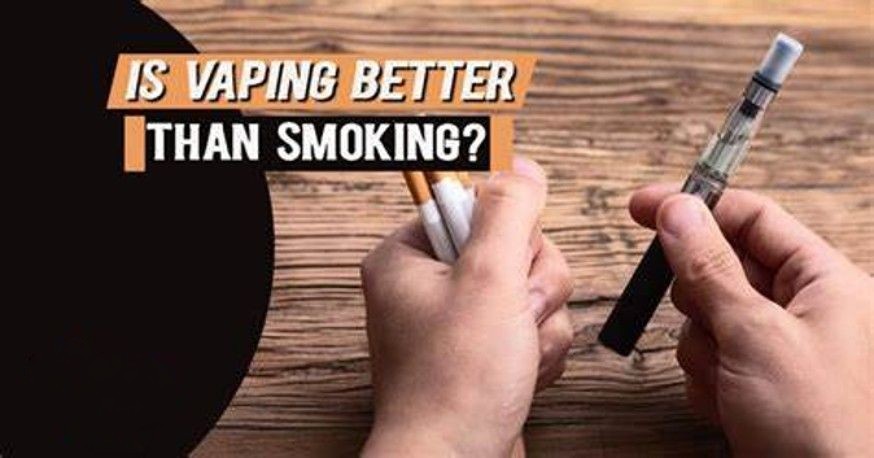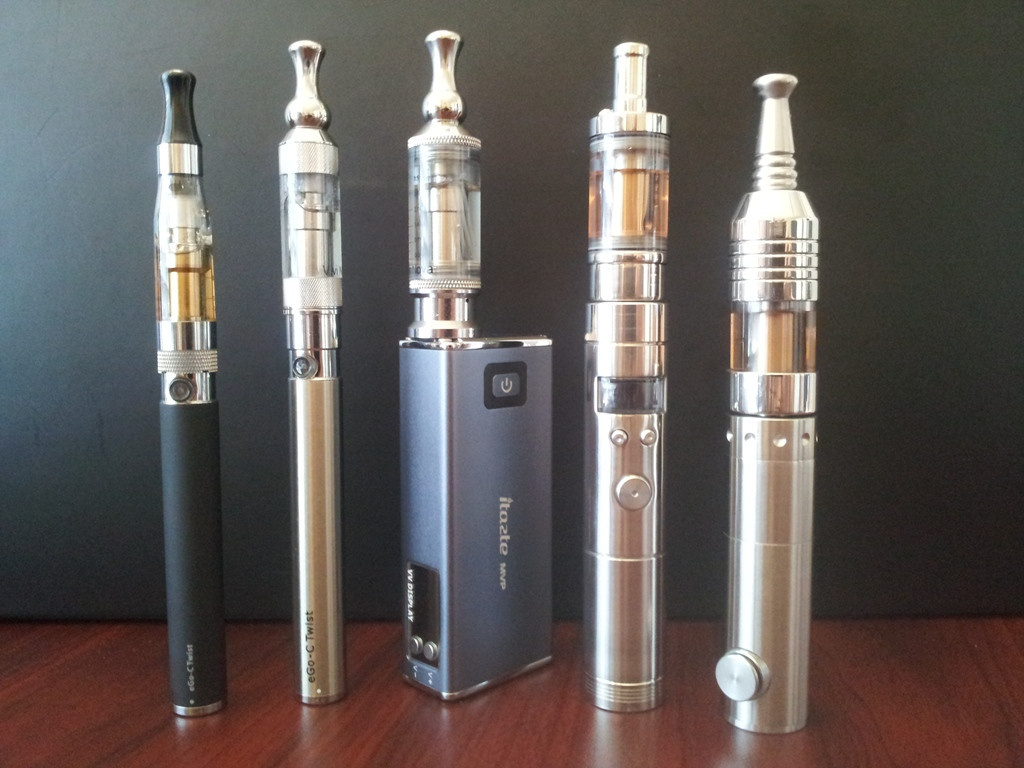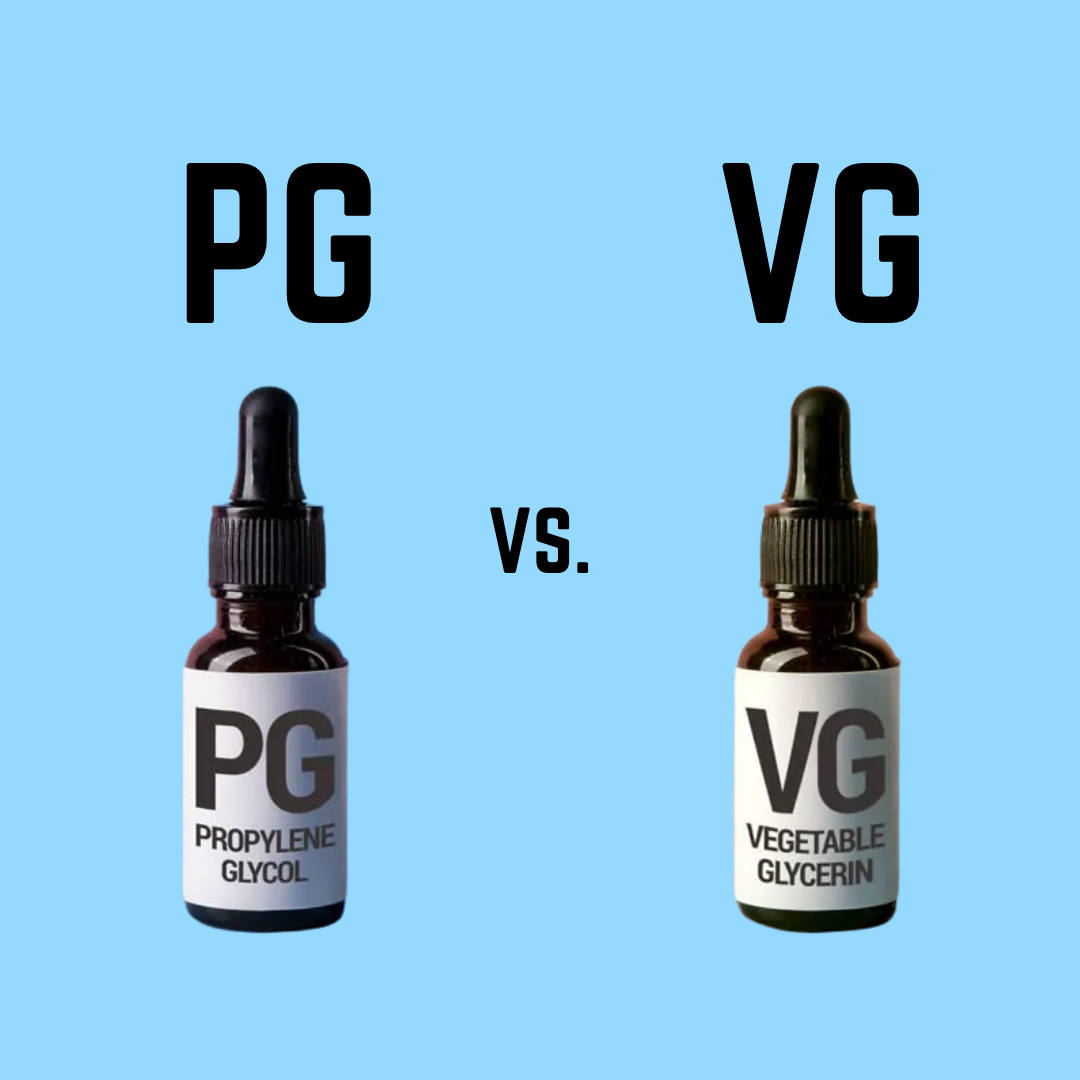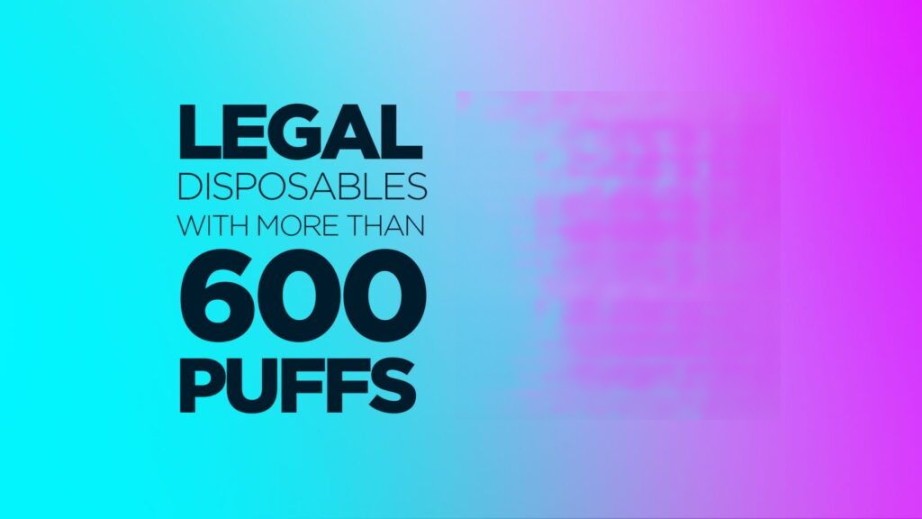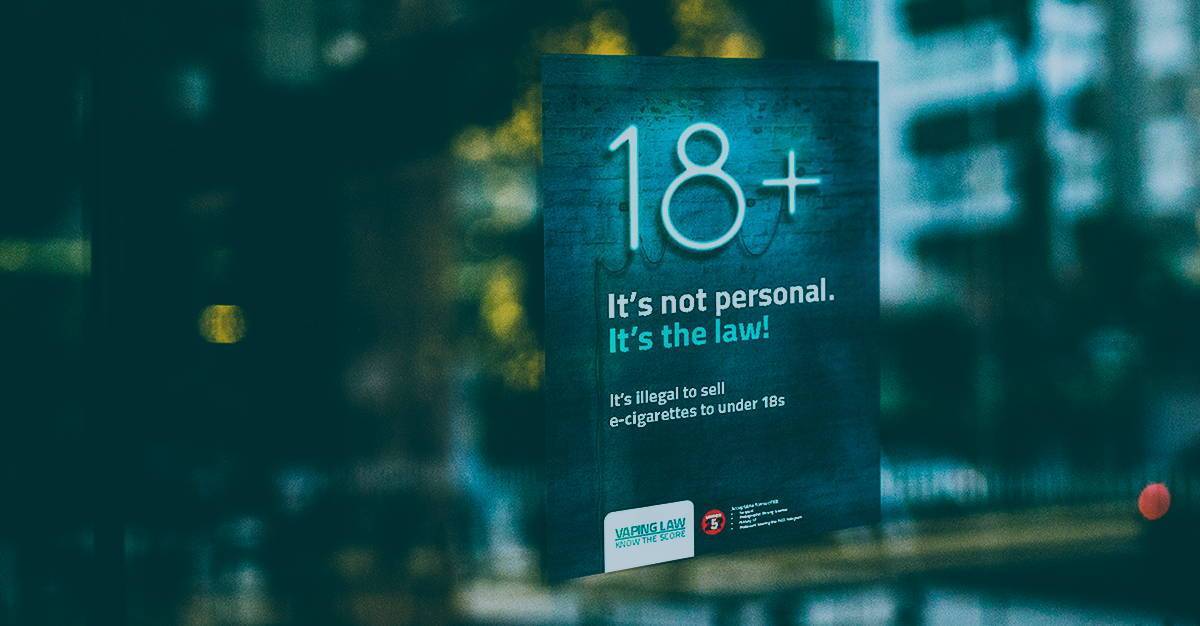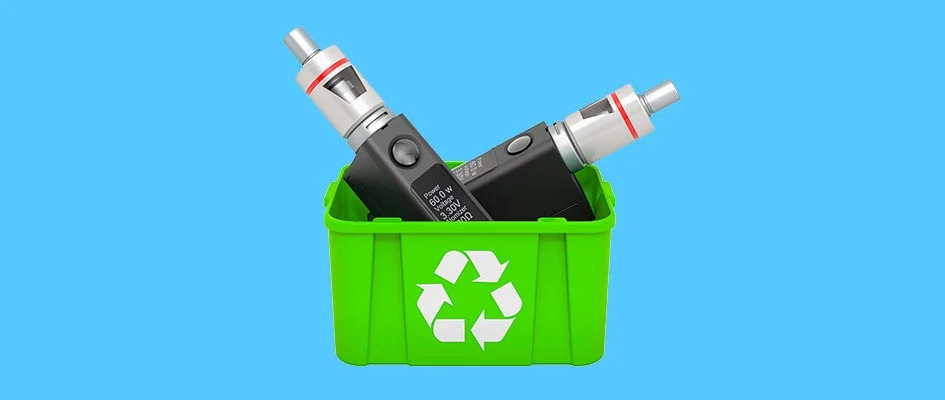Vaping Frequently Asked Questions
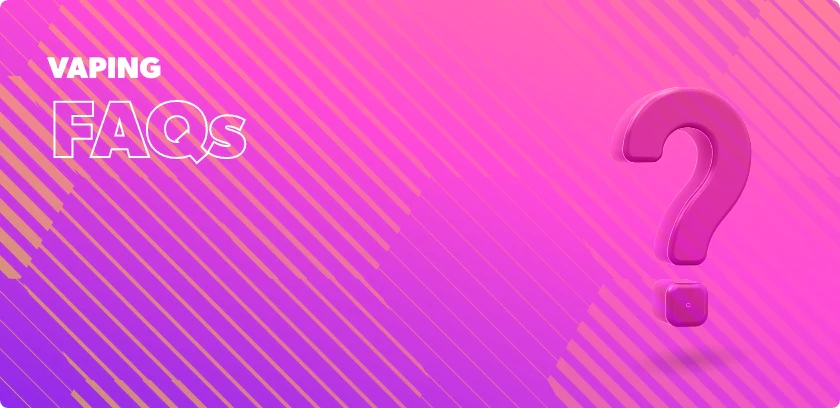
E-Liquid is the solution used in electronic cigarettes, or ‘vapes’, it’s made from a mixture of Propylene Glycol and Vegetable glycerine in varying ratios, to which is added nicotine (often but not always) and flavourings.By heating this liquid in an atomiser a vapour is produced that is inhaled by the vaper to get nicotine, thereby avoiding combustible tobacco.
Nope. There’s no actual tobacco involved, even in tobacco flavoured e-liquid.
E-Liquid is made from 4 main ingredients:
Propylene glycol (PG) a colourless, flavourless liquid used in thousands of food, medicine and cosmetic products that makes up some of the e-liquid base. It carries flavours very well and provides a little of the ‘throat hit’ or an e liquid
Glycerine, aka vegetable glycerine (VG), a thicker liquid that produces bigger clouds when vapourised.
Nicotine. Not always, but often included in e-liquids this is the reason anyone vapes in the first place; a way to get nicotine without smoking cigarettes.
Flavourings, to make the vapour taste delicious flavourings are added, anything from fruits to baked desserts, even tobacco or menthol flavours are added to e-liquids to make them distinct and tasty!
E-liquid is known by a couple of names vape juice, vape liquid, e-juice.
The e-liquid is what produces the vapour.
It comes in a variety of nicotine strengths and a huge range of flavours.
It’s made from PG (propylene glycol) and VG (vegetable glycerine), in various ratios.
It can contain nicotine but doesn’t always.
It needs to be stored in a cool place out of direct sunlight.
You can mix flavours together to make your own blends.
PG/VG means Propylene Glycol/Vegetable Glycerine and refers to the ratio of each in the base mix of e-liquids.
High VG liquid is thicker and provides larger clouds but makes it harder to wick in standard tanks.
High PG e-liquid is thinner and provides a little more throat hit, it’s perfect for higher strength liquids used in standard tanks.
A nic shot is a 10ml bottle of e-liquid that doesn’t contain any flavouring but does contain nicotine, usually at 18mg strength. Nic shots are designed to be added to shortfill e-liquids, that’s eliquids that don’t have nicotine already and are sold in bottles with slightly more space specifically to allow for adding a nic shot.
Depending on the size of the shortfill bottle, adding a nic shot can make your e-liquid into different strengths, for example a 50ml shortfill bottle mixed with a 10ml nic shot at 18mg will make 60mls of e-liquid that is 3mg nicotine strength.
It’s easy to mix a nic shot into a shortfill eliquid, just pop the cap off your eliquid and pour in the nic shot. Close it back up, give it a shake to combine and you’re ready to go!
We made an easy to follow 10 step guide over on our blog. Click here to read 10 Easy Steps – Shortfill E-Liquid.
It’s different for everyone! Some people like to vape away all day while others set themselves dedicated ‘vaping breaks’.
Roughly speaking, the average 20 a day smoker will probably use about 2ml of high PG/5050 eliquid a day, but that depends on the strength of the e-liquid too.
The strength of your liquid is going to depend entirely on what you feel is necessary to satisfy your nicotine craving.
As a rough guide, someone who smoked 20 cigarettes a day would most likely want to start their vaping journey with an 18mg liquid or possibly a 20mg nic salt e-liquid to more accurately replicate the feeling of smoking. Some people like to decrease the strength they use over time as they start to find their desire for nicotine decreasing.
It can be a little daunting to pick out a flavour you might want to try with so many options available in vape shops these days. Luckily because there are so many different ones that means there’s something for everyone!
Lots of websites will break down flavours by category such as ‘tobacco’, ‘fruit’, ‘bakery’ and many others so if you know the type of flavour you might enjoy you can see a whole range.
You can also chat to shop staff, they have a great knowledge of the different flavours they’ll have available and may even recommend what they enjoy themselves!
Remember there’s no rush, you can try as many different flavours as you like until you find the one that’s right for you!
VG (vegetable glycerine) is a thick, slightly sweet liquid used in the base mix of e-liquids. PG (propylene glycol) is a thinner flavourless liquid that provides a little more throat hit than VG.
A high VG e-liquid will produce a larger cloud of vapour, a high PG e-liquid will produce a smaller cloud but have slightly more throat hit. A 50/50 mix will offer the best of both worlds.
This is going to depend entirely on your personal preferences.
Usually, we recommend that people who smoked 20 cigarettes per day start with a high strength like 18mg, but some find they prefer a lower nicotine strength right from the get-go.
Others prefer to start high and gradually lower the strength they use. A good way to find out is to try a couple of strengths to see which is the best for you.
We have a huge range of E-Liquids in lots of different PG/VG ratios, but the most common are 70% VG based or a 50/50 mic of PG and VG. There are a few variations like 75% VG and the Blackstone Labs Range which is 80% PG, but most of what we have in stock at Blackstone Labs is 70/30 VG or a 50/50 mix.
TPD stands for the Tobacco Products Directive, which is an EU tobacco regulation that was adopted into English law as part of the TRPT (Tobacco and Related Products Regulations) in May of 2016. It has had an impact on a couple of aspects of vaping:
Vape tank capacity can’t be more than 2ml
Eliquid strength can’t be higher than 20mg
Eliquids with nicotine in them cant be sold in bottles bigger than 10ml
All nicotine containing eliquids must be tested and approved by the MHRA, a government body that oversees health products.
Certain workarounds such as larger replacement glass sections for tanks have started to become more popular as after-market improvements for tanks.
The size restriction on e-liquids has led to the popularity of shortfills, large bottles of e-liquids without nicotine but with extra space so vapers can add a “nic shot”, a 10ml bottle of flavourless nicotine.
PHE (Public Health England) have declared and often reaffirm that vaping is at least 95% safer than smoking cigarettes.
‘Safe’ is a strict legal term and as yet vaping has not been declared as such because no long-term historical study has looked at the effects of vaping with eliquid. Vaping doesn’t involve burning tobacco leaves, which removes over 4000 chemicals from the equation, including roughly 60+ that are known to be carcinogenic.
A report from the Royal Society for Public Health suggests nine out of 10 people falsely believe nicotine is very harmful to their health, when in fact it is no more dangerous than the caffeine in a cup of coffee.
Shirley Cramer, chief executive of the RSPH, said: "Getting people on to nicotine rather than using tobacco would make a big difference to the public's health… this would move us on from having a serious and costly public health issue from smoking-related disease to instead address the issue of addiction to a substance which in and of itself is not too dissimilar to caffeine addiction."
The TPD guidelines that became TRPR laws that came into effect in May of 2016 stipulate certain specific warning labels that have to be printed on nicotine containing e-liquids, but due to vague wording while the TPD was still in its planning stages many companies put the warning label on other products as well to make sure they were covered under the laws.
It is illegal to sell vape products to people under 18 years of age. You must be 18 to buy any product from Blackstone Labs.
It is! Thanks to the TRPR laws vape liquids have to be emissions tested and have their ingredients approved by the MHRA before they are allowed to be put on sale. Devices are subject to the same regulations as all battery-containing electronics.
All liquids and devices sold by reputable retailers are regulated and monitored to ensure public safety.
Before being released for sale on the EU and UK market e-liquids are subjected to tests to ensure their purity and to make sure their ingredients follow the legal guidelines for safety.
These are similar to emissions tests that cars undergo, and they make sure every e-liquid sold meets acceptable standards.
We strongly advise not to vape while pregnant. Nicotine enters the bloodstream and will be transferred to the unborn child.
Some people can have a very mild allergic reaction to PG, is those people still wish to vape we recommend choosing high-VG E-Liquids.
E-cigs use lithium-ion batteries just like phones and tablets and many other electronic devices do. Batteries can be damaged or short-circuited if not cared for properly. Often people carry a loose battery in a pocket with keys or change which can cause a short-circuit, this will cause the battery to heat up and it might vent or explode.
Do Not Worry!
Although nicotine can be absorbed by the skin, even the highest nicotine strengths found in vape juice / E-Liquid available on the UK market will not cause unwanted side effects.
This is because the nicotine in E-Liquid is not able to be absorbed through skin quickly enough to have any noticeable effects.
The lethal dose of nicotine is estimated to be in the range of 500mg to 1,000mg+ far whilst the maximum strength available in the UK is 20mg.
Other side effects and risk of nicotine poisoning are unlikely to occur at such low doses.
Unless you are dealing with concentrated nicotine in an industrial setting, getting vape juice on your skin is really nothing to be worried about.
If you do get E-Liquid on your skin, don’t panic, just wash it off with soap and warm water.
It is common practise for vapers to try e-liquid flavours by squeezing a small drop of e-juice on their finger to taste, as well as vape devices occasionally spitting juice into the mouths of the users. Getting E-Liquid in your mouth from these or similar occurrences is in no way harmful.
It may sometimes be unpleasant, but not dangerous.
For E-Liquid to be harmful from being ingested orally, it would require large amounts of high nicotine to be consumed; i.e. drinking high strength Nicotine.
Though you can experience symptoms of nicotine poisoning with smaller doses, in order to cause severe or fatal side effects, someone would have to drink multiple bottles of 20mg nicotine E-Liquid which would give a dose of over 700mg of nicotine.
So if you do get E-Liquid in your mouth just rinse with clean water.
No long-term studies on vaping have yet been published, but there have been numerous short-term studies and evidence reviews such as the one by Public Health England in which they found vaping to be 95% safer than smoking.
This often depends on how you’re travelling.
Airlines may have their own stipulations and it’s always worth reading their rules or asking a representative before travelling, but most airlines operate a system that requires rechargeable lithium-ion batteries to be carried in hand luggage and liquid capacity limits. Your airline is unlikely to allow vaping during a flight, always check with the company you’re travelling with. For more details click here !!
A tip from the frequent-fliers of Blackstone Labs Empty your tank before you fly and refill it once you arrive, otherwise the pressure changes will cause it to leak. You can’t use it on the plane so it doesn’t need to be full!

